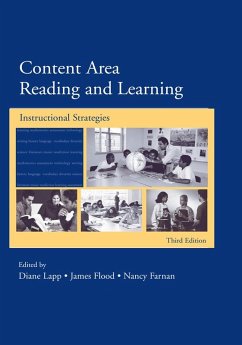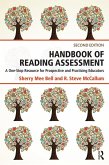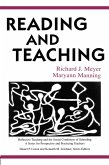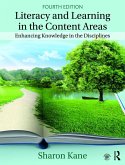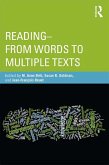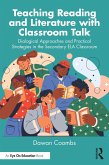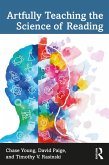Content Area Reading and Learning (eBook, PDF)
Instructional Strategies, 3rd Edition
Redaktion: Lapp, Diane; Farnan, Nancy; Flood, James
87,95 €
87,95 €
inkl. MwSt.
Sofort per Download lieferbar

44 °P sammeln
87,95 €
Als Download kaufen

87,95 €
inkl. MwSt.
Sofort per Download lieferbar

44 °P sammeln
Jetzt verschenken
Alle Infos zum eBook verschenken
87,95 €
inkl. MwSt.
Sofort per Download lieferbar
Alle Infos zum eBook verschenken

44 °P sammeln
Content Area Reading and Learning (eBook, PDF)
Instructional Strategies, 3rd Edition
Redaktion: Lapp, Diane; Farnan, Nancy; Flood, James
- Format: PDF
- Merkliste
- Auf die Merkliste
- Bewerten Bewerten
- Teilen
- Produkt teilen
- Produkterinnerung
- Produkterinnerung

Bitte loggen Sie sich zunächst in Ihr Kundenkonto ein oder registrieren Sie sich bei
bücher.de, um das eBook-Abo tolino select nutzen zu können.
Hier können Sie sich einloggen
Hier können Sie sich einloggen
Sie sind bereits eingeloggt. Klicken Sie auf 2. tolino select Abo, um fortzufahren.

Bitte loggen Sie sich zunächst in Ihr Kundenkonto ein oder registrieren Sie sich bei bücher.de, um das eBook-Abo tolino select nutzen zu können.
This text addresses instructional issues and provides a wealth of classroom strategies that will enable all middle and secondary teachers to effectively teach their students in ways that develop both content concepts and strategies for continued learning
- Geräte: PC
- mit Kopierschutz
- eBook Hilfe
- Größe: 4.09MB
Andere Kunden interessierten sich auch für
![Handbook of Reading Assessment (eBook, PDF) Handbook of Reading Assessment (eBook, PDF)]() Sherry Mee BellHandbook of Reading Assessment (eBook, PDF)72,95 €
Sherry Mee BellHandbook of Reading Assessment (eBook, PDF)72,95 €![Reading and Teaching (eBook, PDF) Reading and Teaching (eBook, PDF)]() Richard MeyerReading and Teaching (eBook, PDF)20,95 €
Richard MeyerReading and Teaching (eBook, PDF)20,95 €![Literacy and Learning in the Content Areas (eBook, PDF) Literacy and Learning in the Content Areas (eBook, PDF)]() Sharon KaneLiteracy and Learning in the Content Areas (eBook, PDF)54,95 €
Sharon KaneLiteracy and Learning in the Content Areas (eBook, PDF)54,95 €![Reading - From Words to Multiple Texts (eBook, PDF) Reading - From Words to Multiple Texts (eBook, PDF)]() Reading - From Words to Multiple Texts (eBook, PDF)51,95 €
Reading - From Words to Multiple Texts (eBook, PDF)51,95 €![Teaching Reading and Literature with Classroom Talk (eBook, PDF) Teaching Reading and Literature with Classroom Talk (eBook, PDF)]() Dawan CoombsTeaching Reading and Literature with Classroom Talk (eBook, PDF)28,95 €
Dawan CoombsTeaching Reading and Literature with Classroom Talk (eBook, PDF)28,95 €![Reclaiming Reading (eBook, PDF) Reclaiming Reading (eBook, PDF)]() Reclaiming Reading (eBook, PDF)54,95 €
Reclaiming Reading (eBook, PDF)54,95 €![Artfully Teaching the Science of Reading (eBook, PDF) Artfully Teaching the Science of Reading (eBook, PDF)]() Chase YoungArtfully Teaching the Science of Reading (eBook, PDF)30,95 €
Chase YoungArtfully Teaching the Science of Reading (eBook, PDF)30,95 €-
-
-
This text addresses instructional issues and provides a wealth of classroom strategies that will enable all middle and secondary teachers to effectively teach their students in ways that develop both content concepts and strategies for continued learning
Dieser Download kann aus rechtlichen Gründen nur mit Rechnungsadresse in A, B, BG, CY, CZ, D, DK, EW, E, FIN, F, GR, HR, H, IRL, I, LT, L, LR, M, NL, PL, P, R, S, SLO, SK ausgeliefert werden.
Produktdetails
- Produktdetails
- Verlag: Taylor & Francis eBooks
- Seitenzahl: 672
- Erscheinungstermin: 18. November 2016
- Englisch
- ISBN-13: 9781351760355
- Artikelnr.: 47140426
- Verlag: Taylor & Francis eBooks
- Seitenzahl: 672
- Erscheinungstermin: 18. November 2016
- Englisch
- ISBN-13: 9781351760355
- Artikelnr.: 47140426
- Herstellerkennzeichnung Die Herstellerinformationen sind derzeit nicht verfügbar.
James Flood, Diane Lapp, Nancy Farnan
Contents: Part I: Content Area Reading: An Overview. T.W. Bean
H. Harper
Content Area Reading: The Current State of the Art. Part II: The Teacher and the Text. C.M. Fairbanks
N.L. Roser
D.L. Schallert
The Role of Textbooks and Tradebooks in Content Area Reading. B.B. Armbruster
Matching Readers and Texts: The Continuing Quest. Part III: The Students. K. McArthur
T. Penland
F. Spencer
P. Anders
Why Content Area Literacy?: Focus on Students. T. Gunning
Engaging Students Who Are Struggling Toward Success as Content Area Readers. B.A. Shearer
M.R. Ruddell
Engaging Students' Interest and Participation in Learning. L.M. Sutherland
S. Botzakis
E.B. Moje
D.E. Alvermann
Bringing Youth Culture Into Content Learning and Literacy. G.E. García
M.V. Montavon
Making Content-Area Instruction Comprehensible for English Language Learners. Part IV: The Instructional Program. G. Ivey
The Content Area Teacher's Instructional Role: Moving Students Toward Strategic Independent Reading. L. Mikulecky
Literacy Demands for Employment: How Jobs Have Changed and What Teachers Can Do. B. Moss
Facts That Matter: Teaching Students to Read Informational Text. C. Santa
L. Havens
S. Harrison
Teaching Secondary Science Through Reading
Writing
Studying
and Problem Solving. F.R. Curcio
A.F. Artzt
Reading
Writing
and Mathematics: A Problem-Solving Connection. E.M. Schell
Empowering Readings in Social Studies. C. Jago
Understanding Literature: Reading in the English/Language Arts Classroom. C. Cox
The Arts and Literacy Across the Curriculum. W.G. Brozo
Authentic Contexts for Developing Language Tools in Vocational Education. L. Gentile
V. McMillan
Reading and Writing in Sports and Physical and Health Education. D.L. Grisham
T.D. Wolsey
Literacy and Technology Integration in the English/Language Arts Classroom. N. Farnan
L. Fearn
Writing to Learn in the Content Areas. M.F. Graves
W.H. Slater
Vocabulary Instruction in the Content Areas. D.M. Ogle
Study Techniques That Ensure Content Area Reading Success. R. Hoffman
Using Concept Mapping as an Effective Strategy in Content Area Instruction. J.F. Almasi
Using Questioning Strategies to Promote Students' Active Discussion and Comprehension of Content Area Material. L. Kucan
Multigenre Reading/Writing in the Content Areas. J. O'Flahavan
R. Tierney
Moving Beyond Reading and Writing in the Content Areas of Discipline-Based Inquiry. R. Pritchard
S. O'Hara
Assessment in the Content Areas: Solving the Assessment Puzzle. Part V: School Culture and Environment. N. Frey
D. Fisher
Strategies for Engagement and Motivation in Middle and High School Classrooms. M. Mraz
R.T. Vacca
J.L. Vacca
Creating Response-Centered Learning Environments: Using Authentic Texts to Extend and Enrich the Curriculum. J. Barton
K.D. Wood
Lesson Planning for Best Practices in the Content Areas.
H. Harper
Content Area Reading: The Current State of the Art. Part II: The Teacher and the Text. C.M. Fairbanks
N.L. Roser
D.L. Schallert
The Role of Textbooks and Tradebooks in Content Area Reading. B.B. Armbruster
Matching Readers and Texts: The Continuing Quest. Part III: The Students. K. McArthur
T. Penland
F. Spencer
P. Anders
Why Content Area Literacy?: Focus on Students. T. Gunning
Engaging Students Who Are Struggling Toward Success as Content Area Readers. B.A. Shearer
M.R. Ruddell
Engaging Students' Interest and Participation in Learning. L.M. Sutherland
S. Botzakis
E.B. Moje
D.E. Alvermann
Bringing Youth Culture Into Content Learning and Literacy. G.E. García
M.V. Montavon
Making Content-Area Instruction Comprehensible for English Language Learners. Part IV: The Instructional Program. G. Ivey
The Content Area Teacher's Instructional Role: Moving Students Toward Strategic Independent Reading. L. Mikulecky
Literacy Demands for Employment: How Jobs Have Changed and What Teachers Can Do. B. Moss
Facts That Matter: Teaching Students to Read Informational Text. C. Santa
L. Havens
S. Harrison
Teaching Secondary Science Through Reading
Writing
Studying
and Problem Solving. F.R. Curcio
A.F. Artzt
Reading
Writing
and Mathematics: A Problem-Solving Connection. E.M. Schell
Empowering Readings in Social Studies. C. Jago
Understanding Literature: Reading in the English/Language Arts Classroom. C. Cox
The Arts and Literacy Across the Curriculum. W.G. Brozo
Authentic Contexts for Developing Language Tools in Vocational Education. L. Gentile
V. McMillan
Reading and Writing in Sports and Physical and Health Education. D.L. Grisham
T.D. Wolsey
Literacy and Technology Integration in the English/Language Arts Classroom. N. Farnan
L. Fearn
Writing to Learn in the Content Areas. M.F. Graves
W.H. Slater
Vocabulary Instruction in the Content Areas. D.M. Ogle
Study Techniques That Ensure Content Area Reading Success. R. Hoffman
Using Concept Mapping as an Effective Strategy in Content Area Instruction. J.F. Almasi
Using Questioning Strategies to Promote Students' Active Discussion and Comprehension of Content Area Material. L. Kucan
Multigenre Reading/Writing in the Content Areas. J. O'Flahavan
R. Tierney
Moving Beyond Reading and Writing in the Content Areas of Discipline-Based Inquiry. R. Pritchard
S. O'Hara
Assessment in the Content Areas: Solving the Assessment Puzzle. Part V: School Culture and Environment. N. Frey
D. Fisher
Strategies for Engagement and Motivation in Middle and High School Classrooms. M. Mraz
R.T. Vacca
J.L. Vacca
Creating Response-Centered Learning Environments: Using Authentic Texts to Extend and Enrich the Curriculum. J. Barton
K.D. Wood
Lesson Planning for Best Practices in the Content Areas.
Contents: Part I: Content Area Reading: An Overview. T.W. Bean
H. Harper
Content Area Reading: The Current State of the Art. Part II: The Teacher and the Text. C.M. Fairbanks
N.L. Roser
D.L. Schallert
The Role of Textbooks and Tradebooks in Content Area Reading. B.B. Armbruster
Matching Readers and Texts: The Continuing Quest. Part III: The Students. K. McArthur
T. Penland
F. Spencer
P. Anders
Why Content Area Literacy?: Focus on Students. T. Gunning
Engaging Students Who Are Struggling Toward Success as Content Area Readers. B.A. Shearer
M.R. Ruddell
Engaging Students' Interest and Participation in Learning. L.M. Sutherland
S. Botzakis
E.B. Moje
D.E. Alvermann
Bringing Youth Culture Into Content Learning and Literacy. G.E. García
M.V. Montavon
Making Content-Area Instruction Comprehensible for English Language Learners. Part IV: The Instructional Program. G. Ivey
The Content Area Teacher's Instructional Role: Moving Students Toward Strategic Independent Reading. L. Mikulecky
Literacy Demands for Employment: How Jobs Have Changed and What Teachers Can Do. B. Moss
Facts That Matter: Teaching Students to Read Informational Text. C. Santa
L. Havens
S. Harrison
Teaching Secondary Science Through Reading
Writing
Studying
and Problem Solving. F.R. Curcio
A.F. Artzt
Reading
Writing
and Mathematics: A Problem-Solving Connection. E.M. Schell
Empowering Readings in Social Studies. C. Jago
Understanding Literature: Reading in the English/Language Arts Classroom. C. Cox
The Arts and Literacy Across the Curriculum. W.G. Brozo
Authentic Contexts for Developing Language Tools in Vocational Education. L. Gentile
V. McMillan
Reading and Writing in Sports and Physical and Health Education. D.L. Grisham
T.D. Wolsey
Literacy and Technology Integration in the English/Language Arts Classroom. N. Farnan
L. Fearn
Writing to Learn in the Content Areas. M.F. Graves
W.H. Slater
Vocabulary Instruction in the Content Areas. D.M. Ogle
Study Techniques That Ensure Content Area Reading Success. R. Hoffman
Using Concept Mapping as an Effective Strategy in Content Area Instruction. J.F. Almasi
Using Questioning Strategies to Promote Students' Active Discussion and Comprehension of Content Area Material. L. Kucan
Multigenre Reading/Writing in the Content Areas. J. O'Flahavan
R. Tierney
Moving Beyond Reading and Writing in the Content Areas of Discipline-Based Inquiry. R. Pritchard
S. O'Hara
Assessment in the Content Areas: Solving the Assessment Puzzle. Part V: School Culture and Environment. N. Frey
D. Fisher
Strategies for Engagement and Motivation in Middle and High School Classrooms. M. Mraz
R.T. Vacca
J.L. Vacca
Creating Response-Centered Learning Environments: Using Authentic Texts to Extend and Enrich the Curriculum. J. Barton
K.D. Wood
Lesson Planning for Best Practices in the Content Areas.
H. Harper
Content Area Reading: The Current State of the Art. Part II: The Teacher and the Text. C.M. Fairbanks
N.L. Roser
D.L. Schallert
The Role of Textbooks and Tradebooks in Content Area Reading. B.B. Armbruster
Matching Readers and Texts: The Continuing Quest. Part III: The Students. K. McArthur
T. Penland
F. Spencer
P. Anders
Why Content Area Literacy?: Focus on Students. T. Gunning
Engaging Students Who Are Struggling Toward Success as Content Area Readers. B.A. Shearer
M.R. Ruddell
Engaging Students' Interest and Participation in Learning. L.M. Sutherland
S. Botzakis
E.B. Moje
D.E. Alvermann
Bringing Youth Culture Into Content Learning and Literacy. G.E. García
M.V. Montavon
Making Content-Area Instruction Comprehensible for English Language Learners. Part IV: The Instructional Program. G. Ivey
The Content Area Teacher's Instructional Role: Moving Students Toward Strategic Independent Reading. L. Mikulecky
Literacy Demands for Employment: How Jobs Have Changed and What Teachers Can Do. B. Moss
Facts That Matter: Teaching Students to Read Informational Text. C. Santa
L. Havens
S. Harrison
Teaching Secondary Science Through Reading
Writing
Studying
and Problem Solving. F.R. Curcio
A.F. Artzt
Reading
Writing
and Mathematics: A Problem-Solving Connection. E.M. Schell
Empowering Readings in Social Studies. C. Jago
Understanding Literature: Reading in the English/Language Arts Classroom. C. Cox
The Arts and Literacy Across the Curriculum. W.G. Brozo
Authentic Contexts for Developing Language Tools in Vocational Education. L. Gentile
V. McMillan
Reading and Writing in Sports and Physical and Health Education. D.L. Grisham
T.D. Wolsey
Literacy and Technology Integration in the English/Language Arts Classroom. N. Farnan
L. Fearn
Writing to Learn in the Content Areas. M.F. Graves
W.H. Slater
Vocabulary Instruction in the Content Areas. D.M. Ogle
Study Techniques That Ensure Content Area Reading Success. R. Hoffman
Using Concept Mapping as an Effective Strategy in Content Area Instruction. J.F. Almasi
Using Questioning Strategies to Promote Students' Active Discussion and Comprehension of Content Area Material. L. Kucan
Multigenre Reading/Writing in the Content Areas. J. O'Flahavan
R. Tierney
Moving Beyond Reading and Writing in the Content Areas of Discipline-Based Inquiry. R. Pritchard
S. O'Hara
Assessment in the Content Areas: Solving the Assessment Puzzle. Part V: School Culture and Environment. N. Frey
D. Fisher
Strategies for Engagement and Motivation in Middle and High School Classrooms. M. Mraz
R.T. Vacca
J.L. Vacca
Creating Response-Centered Learning Environments: Using Authentic Texts to Extend and Enrich the Curriculum. J. Barton
K.D. Wood
Lesson Planning for Best Practices in the Content Areas.
